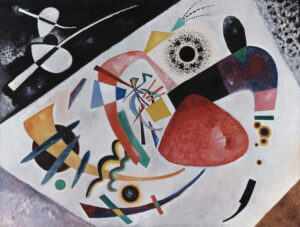
Still Life with Apples and a Pot of Primroses (c. 1890) testifies to Cézanne’s revolutionary approach to the traditional genre of still life.
The Aix artist abandons illusionism here to favor construction through color and geometry. The apples, rendered in a rich chromatic range of ochres, reds and greens, are arranged on white fabric with skillfully orchestrated folds. The pot of pink primroses, a rare floral concession by the artist, brings a note of freshness against the turquoise wall. This particular table, with its arched legs and scalloped apron, served as a favored model for several masterpieces of the 1890s. Cézanne avoids cut flowers that wilt too quickly under his prolonged analytical gaze. The composition reveals his method: to “modulate” rather than imitate, to construct reality through successive colored touches. This approach prefigures the avant-gardes of the 20th century.
Further information
- Still Life with Apples and a Pot of Primroses, by Paul Cézanne, c. 1890
- 28 3/4 x 36 3/8 in. (73 x 92.4 cm), oil on canvas
- The Metropolitan Museum of Art, Fifth Avenue, New York, displayed in gallery 826
- https://www.metmuseum.org/art/collection/search/435882
Master of pictorial modernity, Paul Cézanne (1839-1906) revolutionized Western art through his quest for “harmony parallel to nature.” Born in Aix-en-Provence, trained within the Impressionist orbit, he progressively developed a personal plastic language based on the geometrization of forms and construction through color. His still lifes, true laboratories of experimentation, bear witness to his legendary patience and analytical rigor. Misunderstood during his lifetime, Cézanne profoundly influenced subsequent generations, from Picasso to the Cubists. His works, prized by enlightened collectors like Claude Monet who acquired this canvas, reveal an artist obsessed with the permanence of forms beyond fleeting appearances, a pioneer of modern art.






